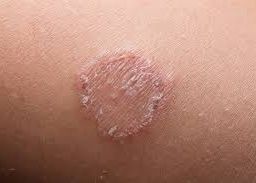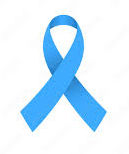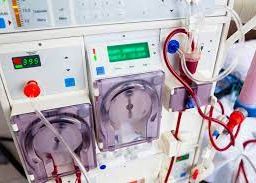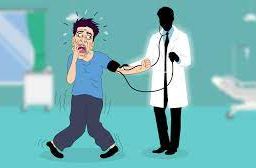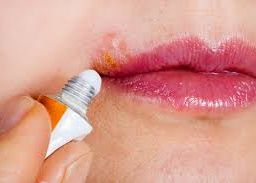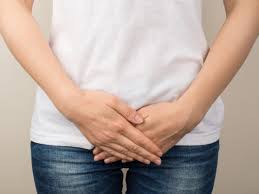
How to Prevent Yeast Infections: Tips for Maintaining Vaginal Health
Yeast infections, a common yet often misunderstood condition, can bring discomfort and confusion to many. In this comprehensive guide, we unravel the mysteries surrounding yeast infections, exploring their causes, symptoms, and treatment options. Whether you’re experiencing this issue firsthand or seeking knowledge for a loved one, this article aims to provide clarity and empowerment in navigating yeast infections effectively.

Ah, the human body, a magnificent vessel that can occasionally throw us a curveball in the form of a yeast infection. For many, the mere mention of a yeast infection can elicit discomfort, embarrassment, and even confusion. Yeast infections are a common topic that tends to be clouded by misconceptions and discomfort. Many individuals, regardless of gender, experience the discomfort and frustration that comes with a yeast infection at some point in their lives. Fear not, for today, we embark on a unique exploration of yeast infections, unraveling their mysteries, and equipping ourselves with knowledge to navigate this common yet often misunderstood condition.
What is a Yeast Infection?
Before delving deeper, let’s understand the basics. A yeast infection, also known as candidiasis, is caused by an overgrowth of the fungus Candida. While Candida naturally resides in various parts of the body, such as the mouth, gut, and vagina, an overgrowth can lead to symptoms and discomfort. The most common type of yeast infection occurs in the vaginal area, but they can also affect other regions, including the mouth, skin folds, and nail beds.
Understanding Yeast Infections:
A yeast infection, also known as candidiasis, is caused by an overgrowth of the Candida fungus. The most common culprit is Candida albicans, a type of yeast that naturally resides in our bodies, predominantly in the mouth, intestines, and genital area. However, certain factors can disrupt the balance, leading to an overgrowth and subsequent infection.
Debunking Myths:
Myth 1: Only women can get yeast infections.
Fact: While it is true that women are more commonly affected, men can also experience yeast infections. Male yeast infections usually manifest as genital itching, redness, and irritation. It is essential to recognize that both genders can be susceptible to this condition.
Myth 2: Yeast infections are always sexually transmitted.
Fact: While sexual activity can contribute to the spread of yeast infections, they are not exclusively sexually transmitted. The overgrowth of Candida can occur due to various factors, including weakened immune systems, antibiotic use, hormonal changes, and high-sugar diets.
The Candida Culprit:
The yeast responsible for most infections is Candida albicans, but other species like Candida glabrata and Candida tropicalis can also cause similar issues. Candida thrives in warm, moist environments, making the vagina an ideal breeding ground. However, several factors can disrupt the delicate balance of microorganisms in the body, triggering an overgrowth of Candida.
Factors Influencing Yeast Infections:
- Antibiotics: These powerful medications can wipe out not only harmful bacteria but also the beneficial bacteria that keep Candida in check.
- Hormonal changes: Fluctuations in hormone levels, such as those experienced during pregnancy, menstrual cycles, or hormone therapy, can create an environment conducive to yeast overgrowth.
- Weakened immune system: A compromised immune system, whether due to an underlying medical condition or certain medications, can reduce the body’s ability to control Candida growth.
- Diabetes: Uncontrolled blood sugar levels provide an inviting environment for yeast to multiply.
- Tight clothing and poor hygiene: Clothing that doesn’t allow for proper ventilation can create a warm, damp environment, promoting yeast growth. Additionally, inadequate hygiene practices can disrupt the balance of bacteria in the affected area.
The Symptoms:

The symptoms of a yeast infection can vary depending on the affected area. Recognizing the symptoms of a yeast infection is crucial for prompt and effective treatment. Common signs include:
- Vaginal yeast infection: Itching, burning, swelling, redness, and a thick, cottage cheese-like vaginal discharge.
- Oral thrush: Creamy white lesions on the tongue, inner cheeks, and throat.
- Skin infections: Red, itchy, and sometimes swollen patches of skin with a scaly texture.
- Nail bed infections: Thickened, discolored nails that may become brittle or crumbly.
- Pain or discomfort during sexual intercourse or urination.
It is important to note that not all vaginal infections are yeast infections, and it is recommended to consult a healthcare professional for an accurate diagnosis.
Treatment:
When it comes to tackling yeast infections, there are several options available:
- Antifungal Medications: Over the counter or prescription antifungal creams, ointments, and suppositories can help clear up infections.
- Oral Medications: In severe or recurring cases, your healthcare provider may prescribe oral antifungal medications.
- Natural Remedies: Some people find relief using natural remedies like probiotics, yogurt, tea tree oil, or boric acid capsules. However, it’s essential to consult a healthcare professional before attempting these remedies.
Prevention and Management Tips:

Preventing yeast infections involves adopting healthy habits:
- Practice safe sex and ensure proper lubrication during sexual activity to reduce friction and irritation.
- Maintain good hygiene practices, especially in the affected areas. Keep the genital area clean and dry, using mild, unscented soaps and avoiding harsh chemicals or douching, which can disrupt the natural balance.
- Opt for breathable clothing: Wear loose-fitting cotton underwear and avoid tight, synthetic fabrics that trap moisture, creating an environment conducive to yeast overgrowth.
- Maintain a balanced diet: A diet high in refined sugars and carbohydrates can contribute to yeast overgrowth. Incorporate probiotic-rich foods, such as yogurt and fermented vegetables, to promote healthy gut flora.
- Limit antibiotic use: Antibiotics can disturb the body’s natural flora, leading to yeast overgrowth. Only take antibiotics when necessary and discuss with your healthcare provider about strategies to mitigate the risk of yeast infections.

-
Probiotics: Incorporate probiotic-rich foods like yogurt, kefir, sauerkraut, and kimchi into your diet. Probiotics promote the growth of beneficial bacteria in the body, which helps maintain a healthy balance and reduces the risk of yeast overgrowth.
-
Diet Modifications: Limit your intake of sugar and refined carbohydrates, as they can fuel Candida growth. Instead, focus on a balanced diet rich in whole foods, vegetables, lean proteins, and healthy fats. Including antifungal foods such as garlic, coconut oil, oregano, and ginger can also be beneficial.
-
Personal Hygiene: Maintain proper hygiene practices, including regular washing and drying of the genital area. Avoid using scented products, douches, and harsh soaps, as they can disrupt the natural balance of vaginal flora. Avoid douching, as it can disrupt the natural balance of bacteria in the vagina. Steer clear of scented hygiene products, as they can irritate the delicate tissues.
-
Stress Management: Chronic stress weakens the immune system, making the body more susceptible to infections. Engage in stress-reducing activities such as meditation, yoga, deep breathing exercises, or pursuing hobbies you enjoy.
-
Natural Topical Remedies: Tea tree oil, apple cider vinegar, and aloe vera gel possess antifungal properties that can help soothe and alleviate yeast infection symptoms. Always dilute these remedies before applying to the affected area.

- Seek professional advice: If you suspect a yeast infection, consult a healthcare professional for an accurate diagnosis and appropriate treatment. Over-the-counter antifungal medications can help alleviate symptoms, but recurrent or severe infections may require prescription medications. If you suspect a yeast infection or are experiencing persistent symptoms, it is crucial to consult a healthcare professional. They can provide an accurate diagnosis and recommend the most suitable treatment plan. Self-diagnosis and self-treatment without medical guidance may lead to ineffective or incorrect remedies, prolonging the discomfort.
Understanding yeast infections, debunking myths, and sharing practical tips for prevention and management is vital to empower individuals facing this common condition. By dispelling misconceptions and promoting open conversations, we can foster a more informed and supportive community. Remember, if you’re unsure about your symptoms or experiencing recurrent infections, seek advice from a healthcare professional who can guide you towards the most suitable treatment options.
Disclaimer: The information provided in this content is for general informational purposes only. It is not intended as medical or healthcare advice, diagnosis, or treatment. Always seek the advice of a qualified healthcare professional with any questions you may have regarding a medical condition or healthcare decisions.



